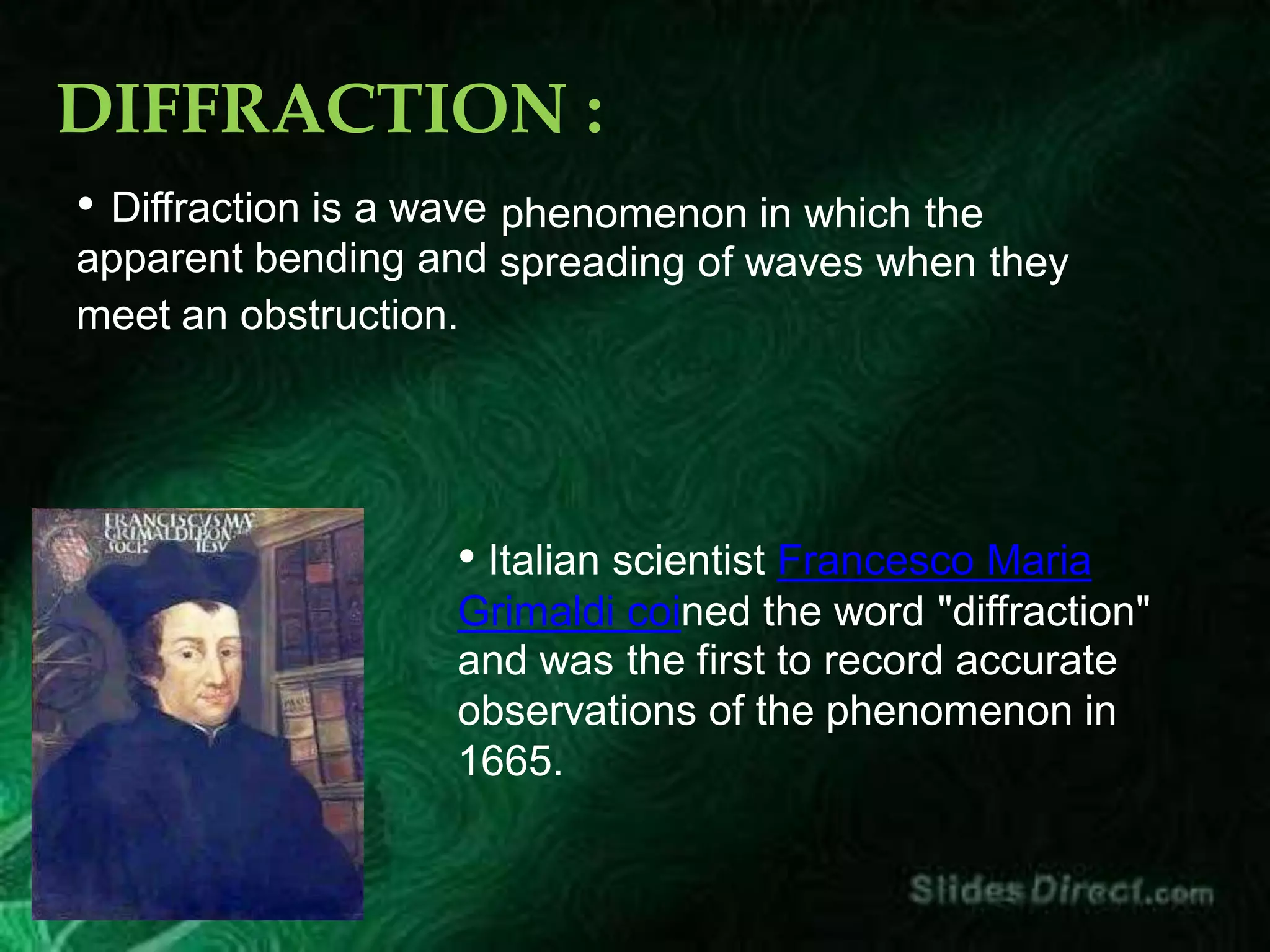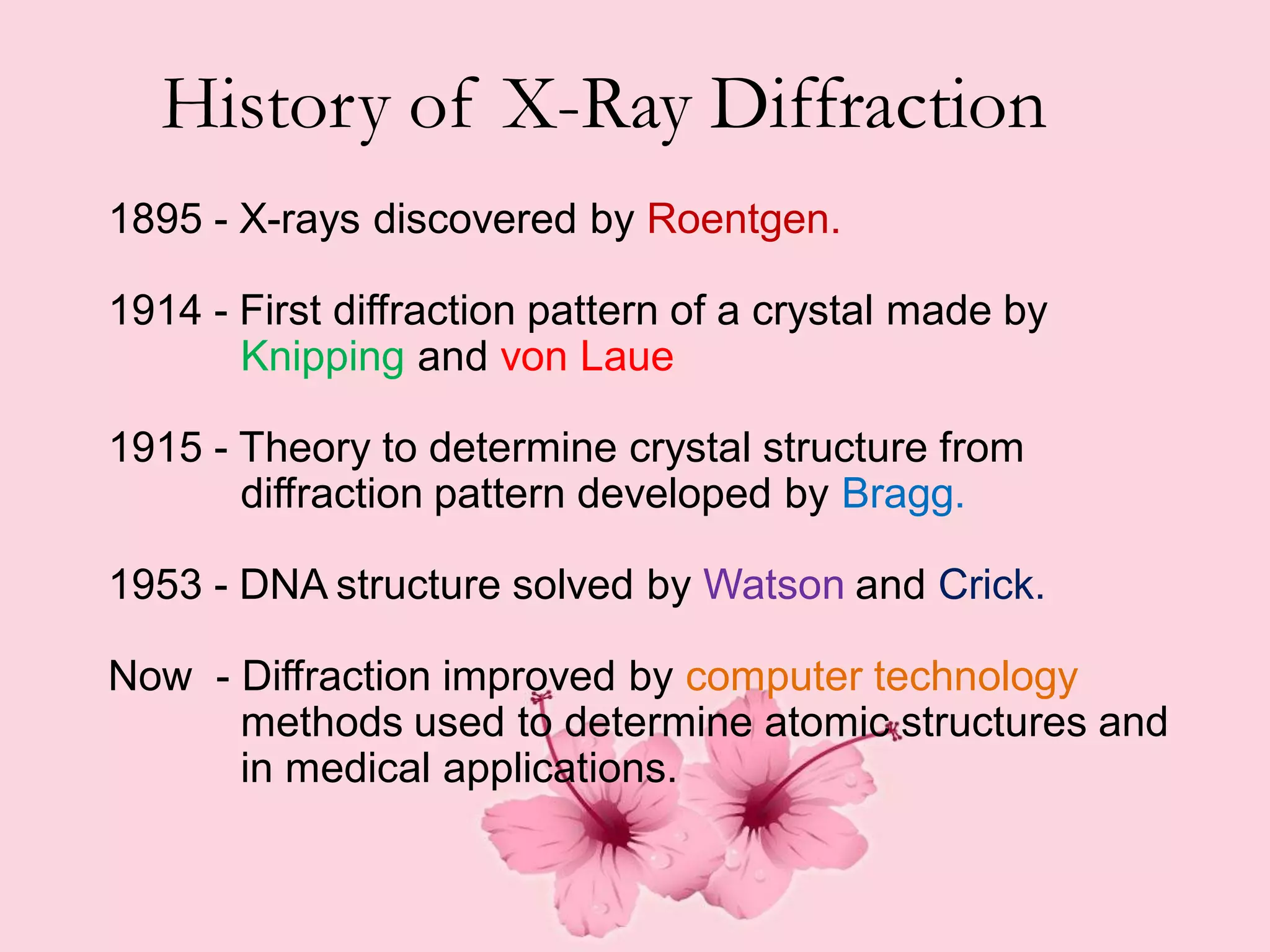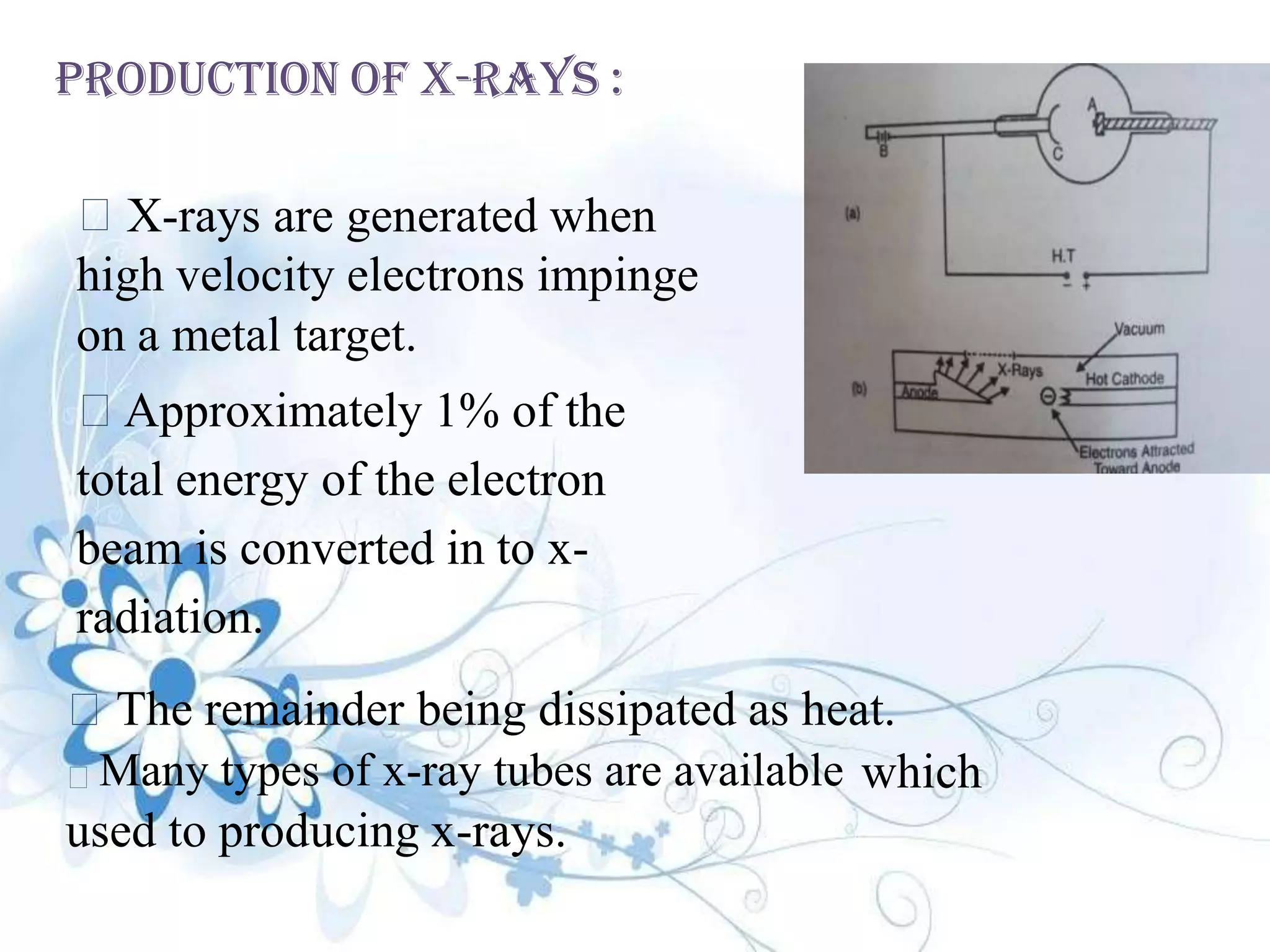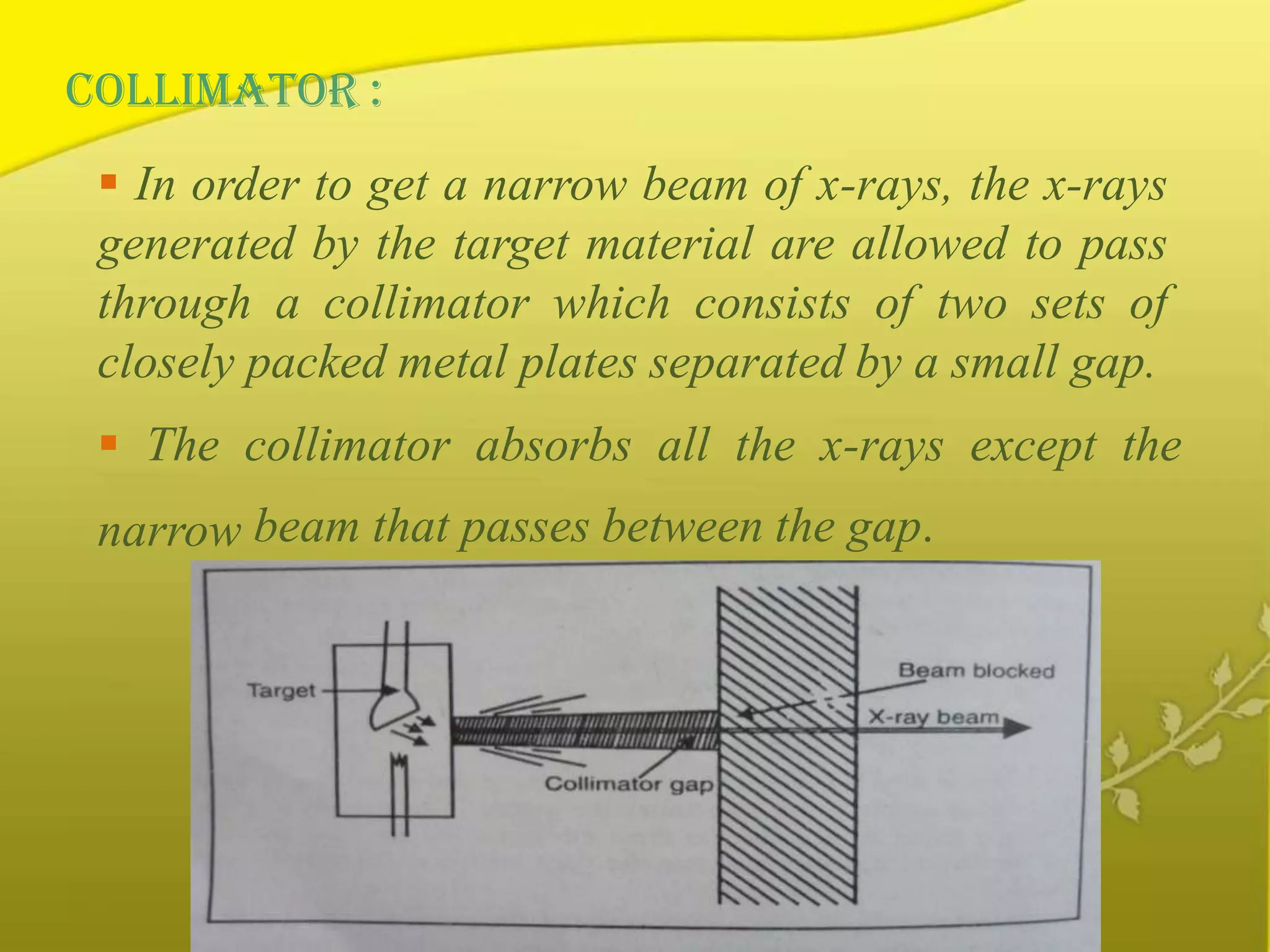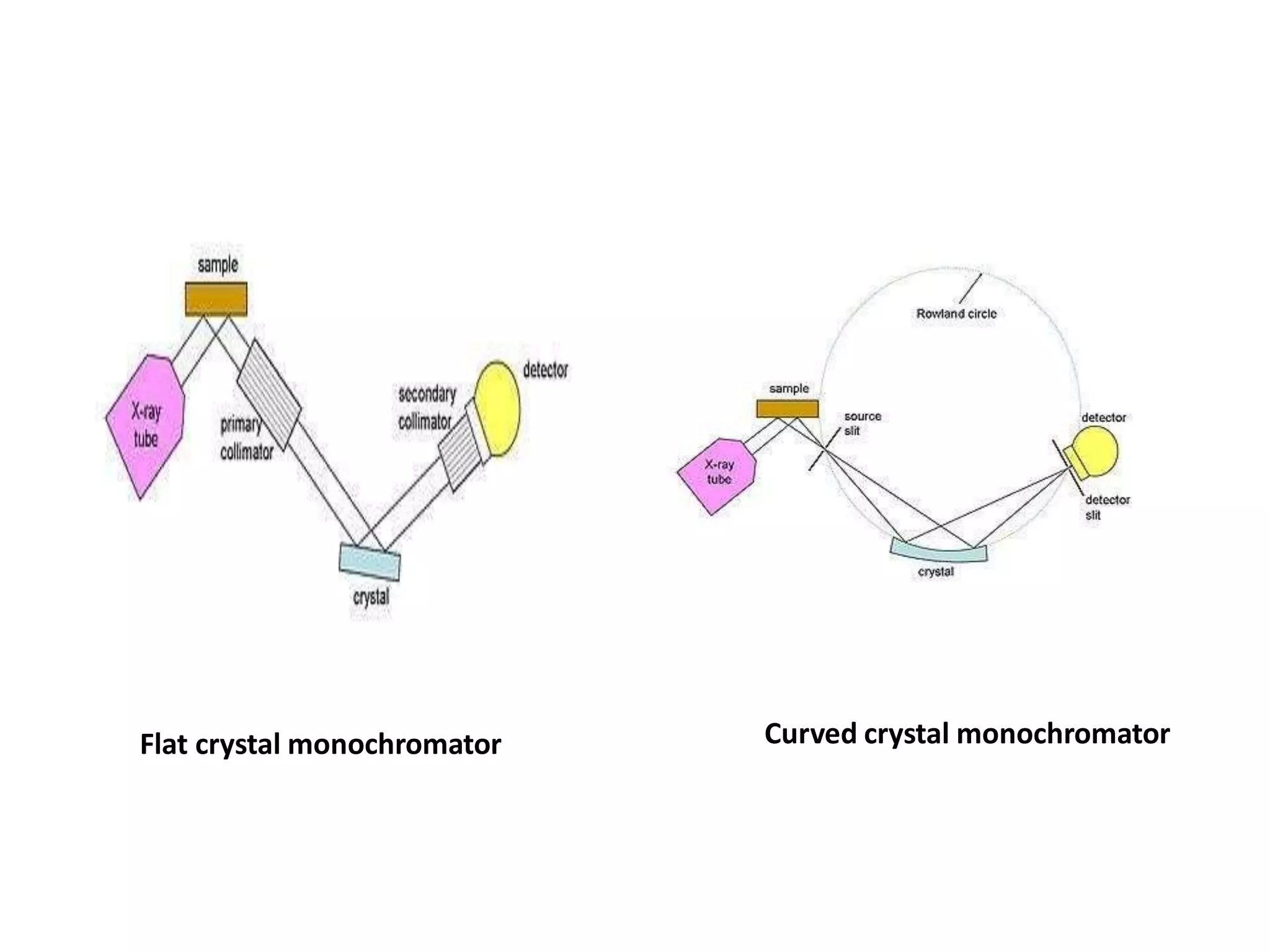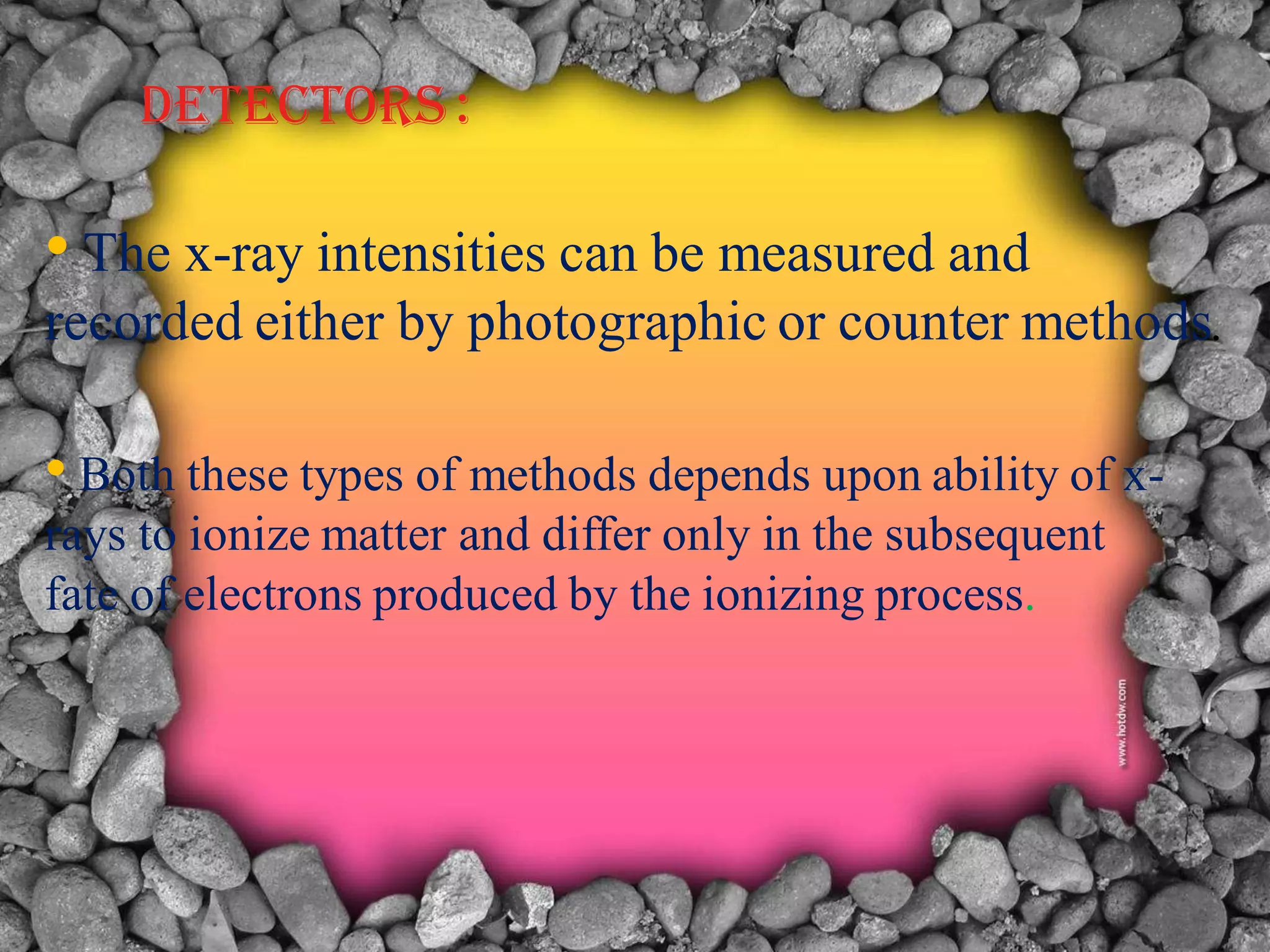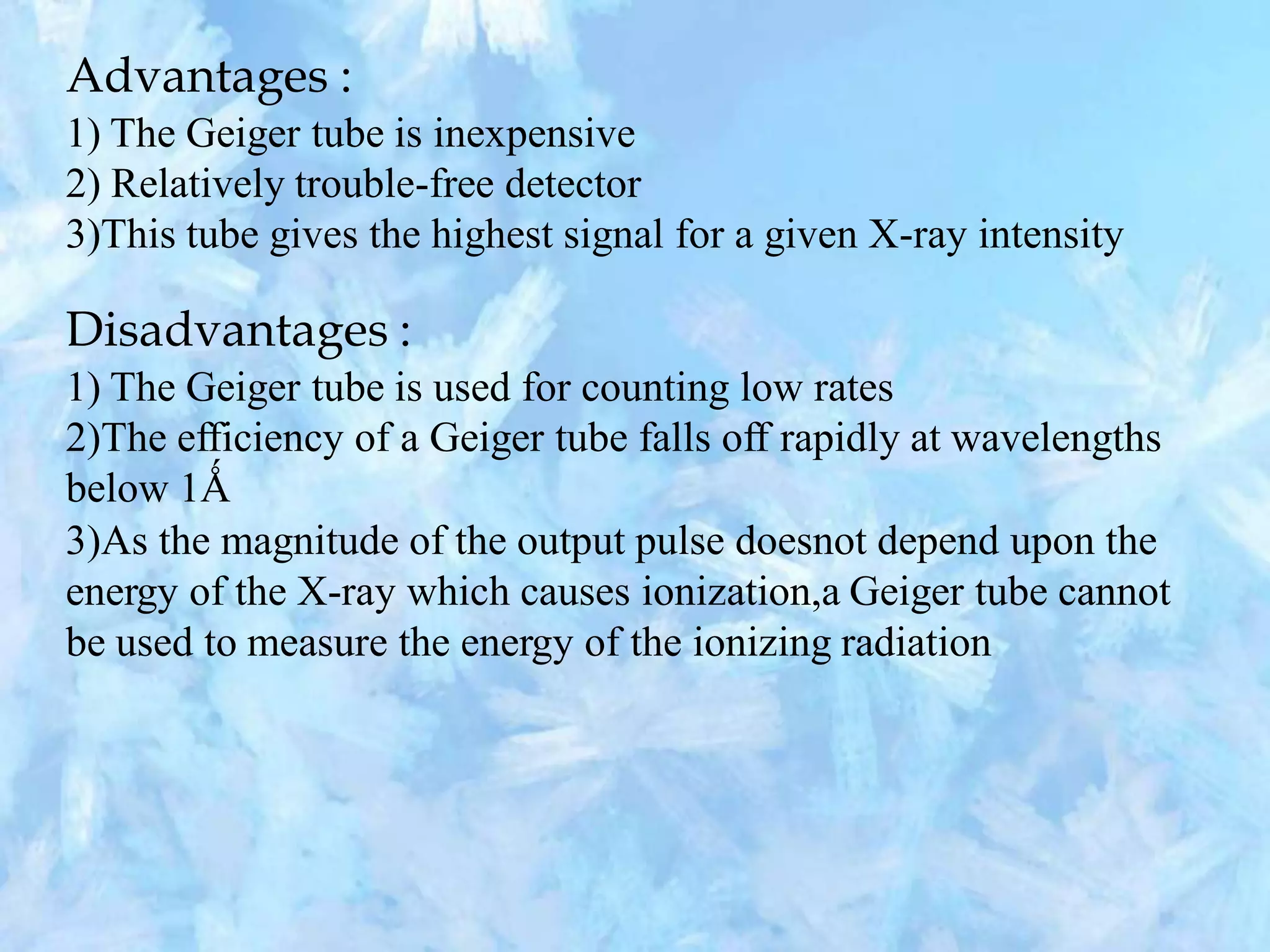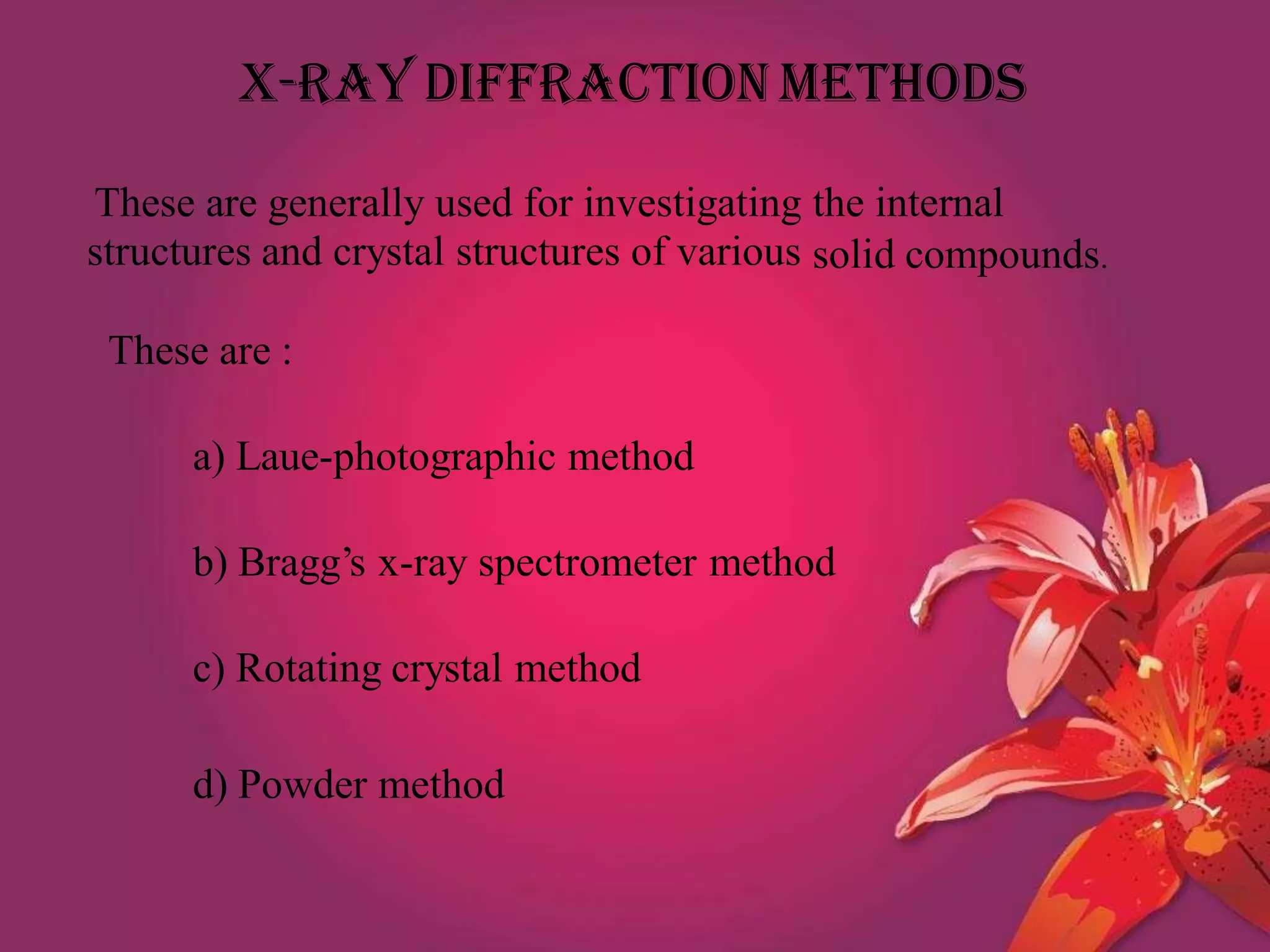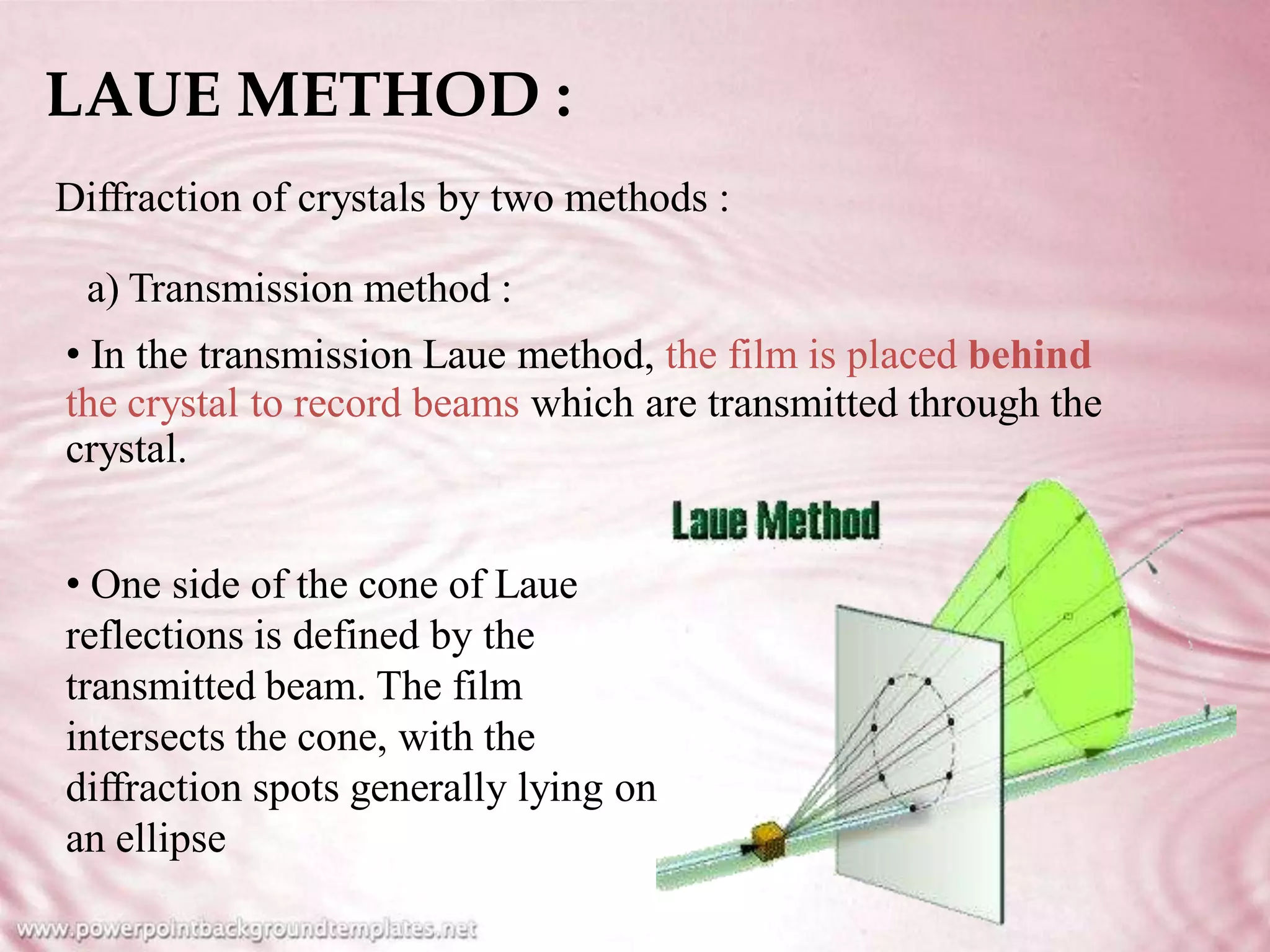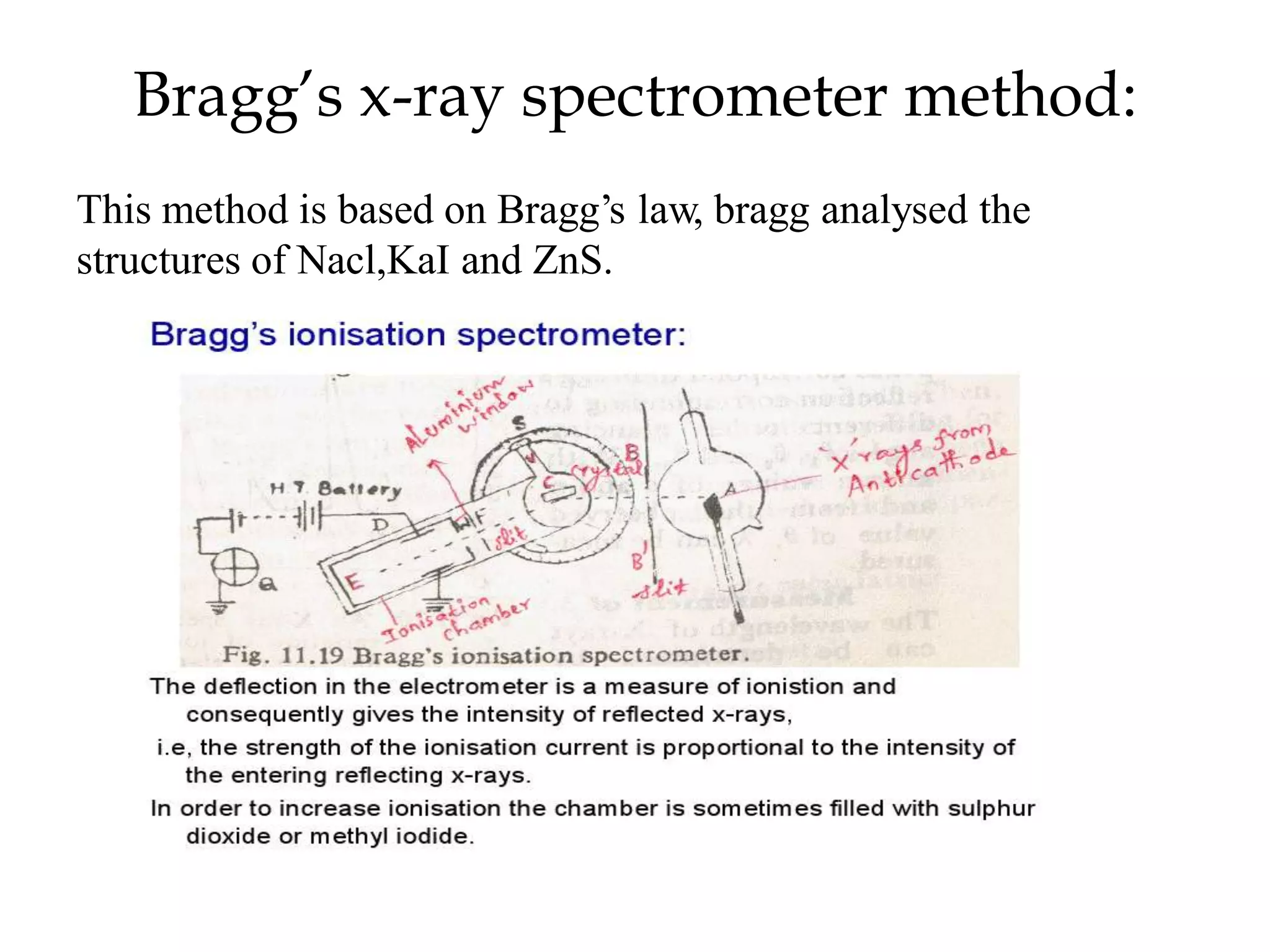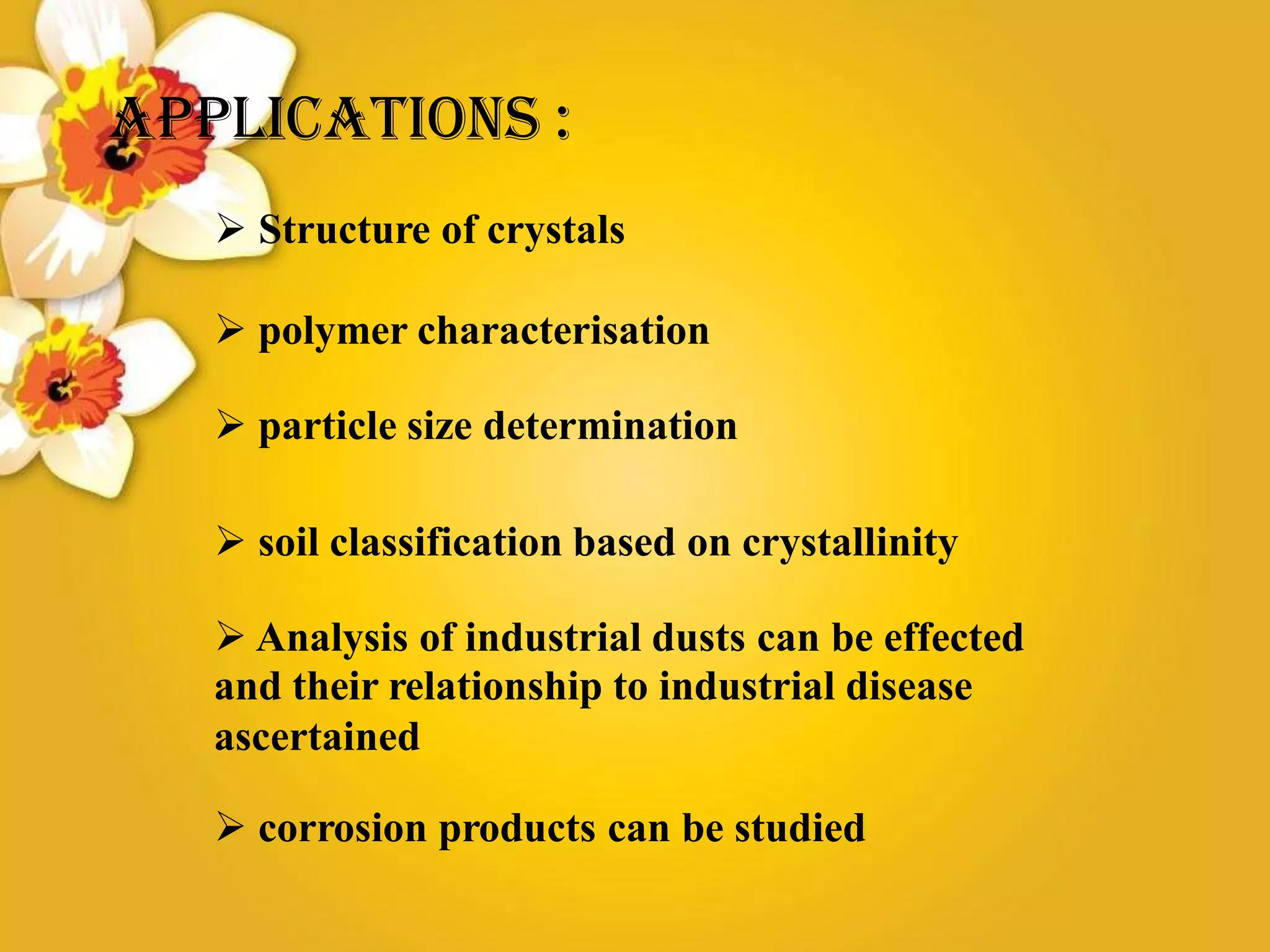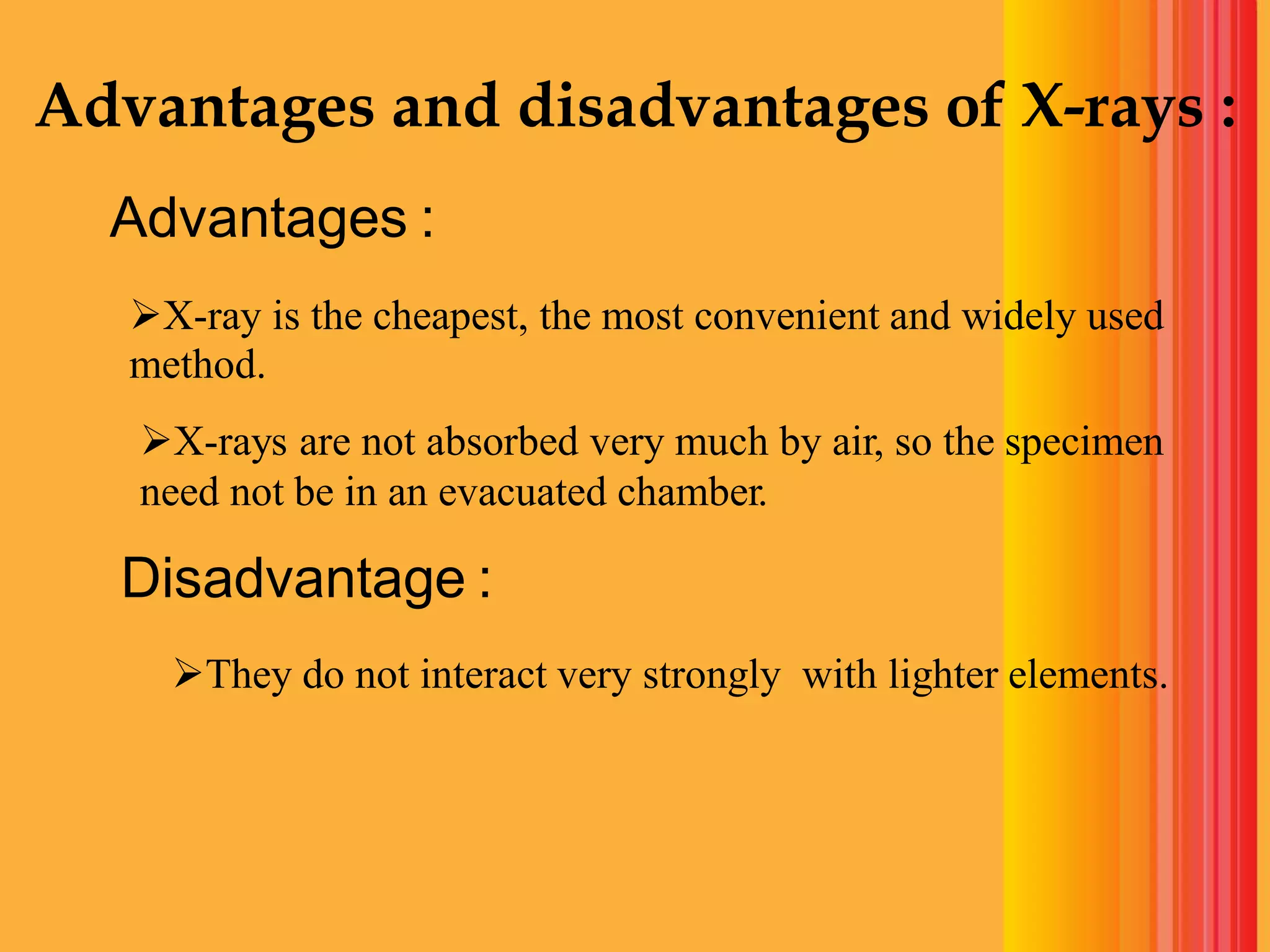X-ray diffraction was discovered in 1895 by Wilhelm Röntgen. It involves using x-rays and analyzing the diffraction patterns formed after x-rays interact with the ordered structure of crystals. Bragg's law describes the conditions under which constructive interference of x-rays occurs leading to diffraction. X-ray diffraction is used to determine the atomic and molecular structure of crystals. It has applications in fields like materials science, chemistry, and structural biology.




